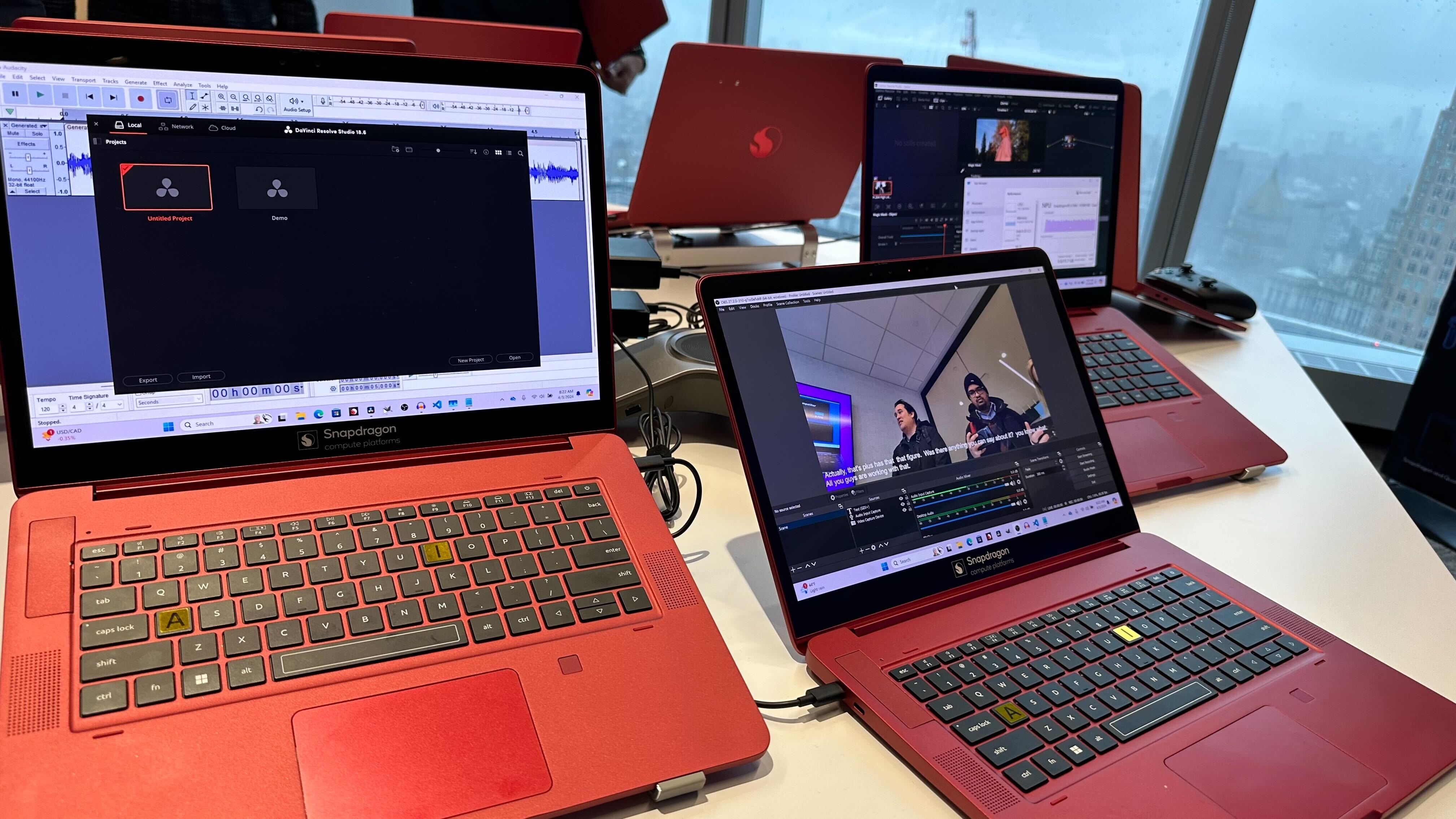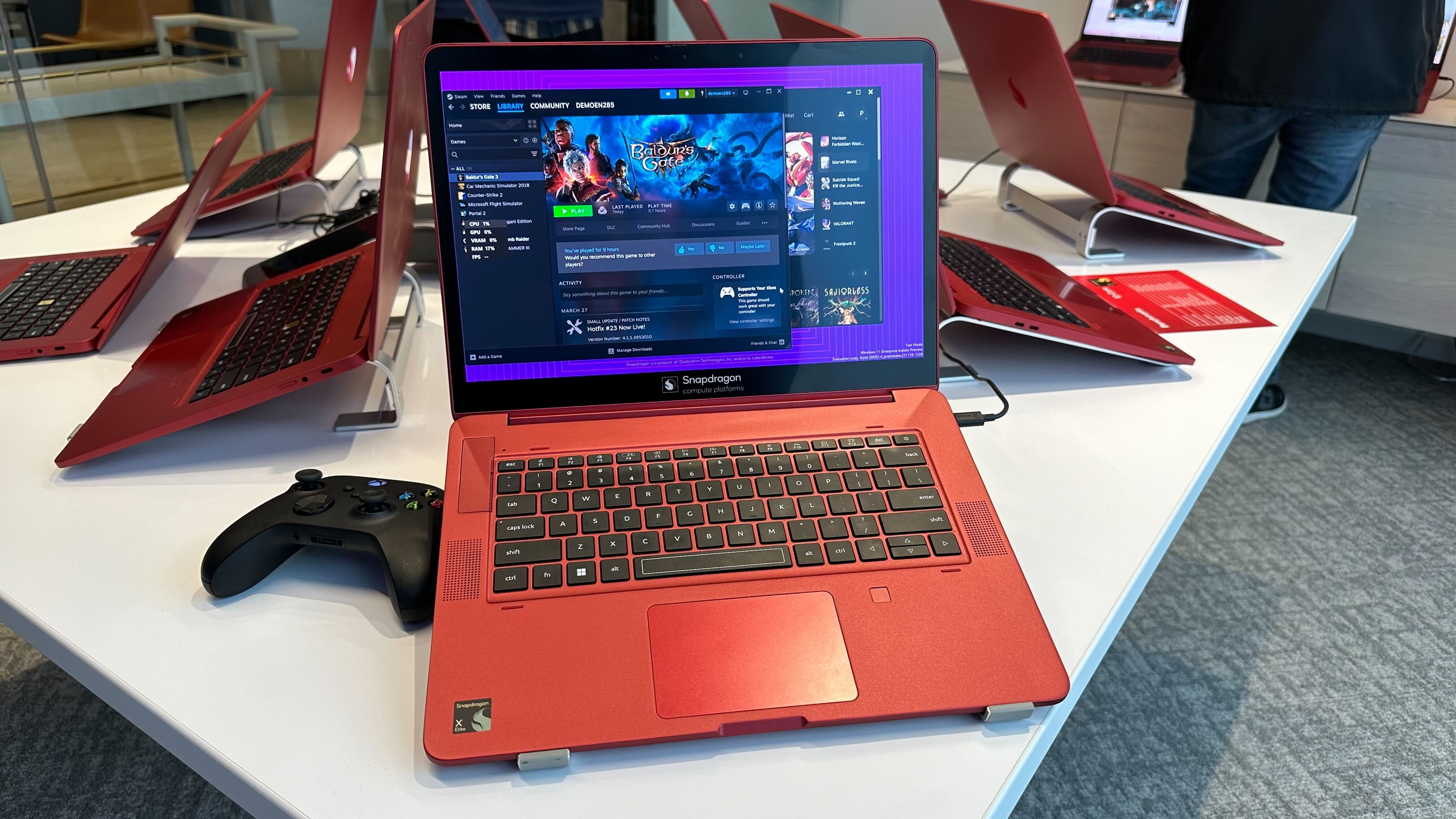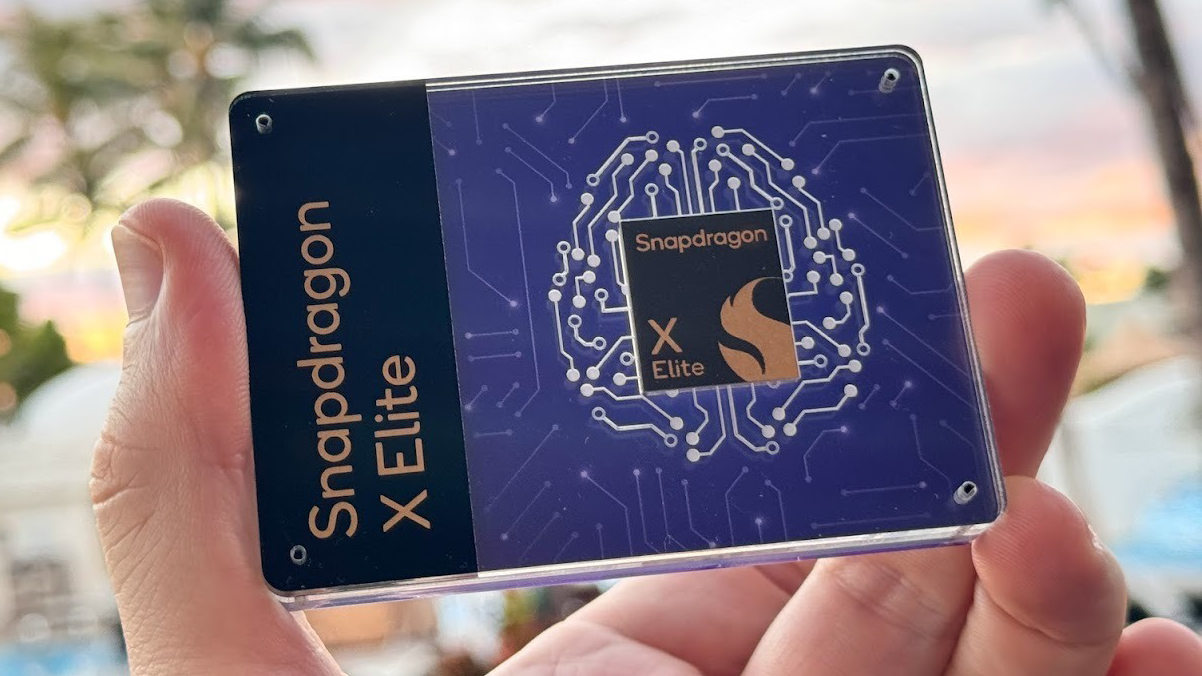
Qualcomm’s Snapdragon X Elite chipsets may not have hit the shelves in any laptops yet, but that hasn’t stopped them from taking the CPU out on the rounds. During a meeting with Qualcomm this week, the company showcased the X Elite chips running a series of demos, from code generation to Da Vinci Resolve and then gaming performance.
With demos of Baldur’s Gate III, Control, and Redout II I was pleasantly surprised by the gaming experience on the new Snapdragon chipset. While the games were run at 1080p, everything was incredibly smooth and consistent.
Snapdragon X Elite gaming: how did it play?

The gaming demos were run on a custom-built platform created by Qualcomm, with a 2.8K display and 32GB of RAM. All three games were running at 1080p and looked fantastic with no dropped frames. And knowing the games were running on a Windows x86 emulator only made the performance more impressive.
As the lone racing title of the bunch, the technical performance of the Snapdragon X Elite chipset on Redout II was perhaps the most impressive. Racing is one of the game types where dropped frames can be very detrimental so seeing the buttery smooth visuals was a great indication of how well the chipsets can handle gaming. It would have been impressive for a gaming laptop, but knowing the demo unit was running on an integrated GPU made the 1080p performance shocking.
In Baldur’s Gate III I immediately ran into a large encounter outside the Druid grove o test how well the CPU and GPU handle some of the more complicated encounters in the tactical RPG. While lower-end PCs and game consoles can struggle with a CPU bottleneck in encounters with tons of NPCs, the Snapdragon X Elite didn’t even stutter. While I didn’t have access to the big “defend the Grove” fight in the demo, the first encounter outside the grove can be a difficult workload so this was a good showingl.
Remedy’s Control was an interesting game choice, as the title was one of the first to leverage raytracing technology to add extra depth to reflections, transparent reflections, raytraced shadows, and indirect lighting. The integrated Qualcomm Adreno GPU built into the Snapdragon X Elite processor isn’t a raytracing card, so you do lose out on some depth. However, Control is still a stunning game even without raytracing effects and it played smoothly on the Snapdragon chip. But it was the most underwhelming of the three games.
Snapdragon X Elite gaming: how does it stack up?

While Qualcomm did have demo units available for us to benchmark, none of the game titles they had access to were games with internal benchmarking tools. And the company’s only gaming benchmark stats they’re claiming so far are for 3DMark’s Wild Life Extreme benchmark, which is not the most strenuous gaming benchmark in the 3DMark suite.
We typically benchmark smartphones using 3DMark Wild Life and Wild Life Extreme as the cross-platform benchmark is the most graphically demanding 3DMark benchmark available for smartphones. It is the only version of 3DMark that is fully cross-compatible between Windows, Android, and iOS devices so we often also benchmark Mac systems using Wild Life and Wild Life Extreme. So it isn’t the strangest choice, but it does mean our comparisons are a bit limited.
That said, the reported 37.1-38.5 FPS rating for Wild Life Extreme is nothing to scoff at. The Apple Macbook Pro 14 M3 averaged 47.1 FPS on that same benchmark back in November 2023, and the Samsung Galaxy S24 Ultra averaged 29.8 FPS on Wild Life Extreme earlier this year.
Snapdragon X Elite gaming: can we expect the same performance at launch?

As Qualcomm wasn’t using production models of any consumer laptops to run the demos, it is hard to say if we’ll see such impressive gaming performance once we get review units running the new ARM chipset. However, if the shipping laptops have comparable specs, including 32GB of RAM, it’s reasonable to assume the performance will be close to the demo units.
However, when it comes to production samples the chips are at the mercy of the OEM manufacturers and what specs they decide to offer. While the CPU and GPU are obviously doing a lot of heavy lifting with gaming tasks, and the NPU can help with hardware acceleration, the units RAM and even storage specs can alter gaming performance. Cooling systems will also have an impact, as any silicon will take a performance hit at high temperatures. Gaming was also the only time Qualcomm’s demo laptops needed fan cooling to keep up so performance loss due to heat issues could be an issue on the X Elite chipset when it comes to gaming workloads. Of course, we will need to get some review units into our lab to be sure.
That said, if you can settle for gaming at 1080p, gaming on a laptop with a Qualcomm Snapdragon X Elite processor will be more than smooth enough for most. So casual laptop gamers rejoice, you may be able to ditch that clunky gaming laptop sometime in the near future.
Qualcomm expects units with the Snapdragon X Elite chipset to launch in mid-2024. So we could see systems as early as June or as late as September.







